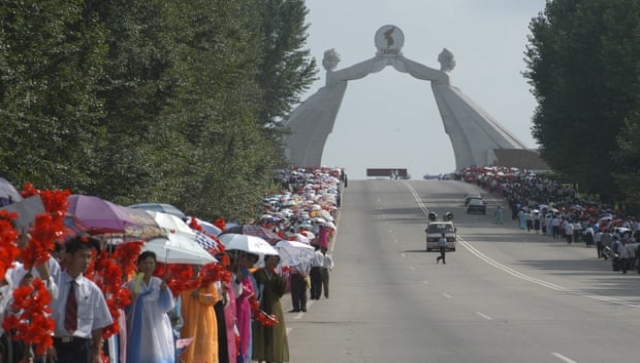Days after North Korea leader Kim Jong-un said the peaceful reunification of the two Koreas was no longer possible, the country’s regime demolished a monument that symbolised hope for reconciliation with the South. According to The Guardian report, citing NK News, the Arch of Reunification – built in 2000 after a landmark inter-Korean summit – has disappeared from satellite imagery, adding, it was not immediately clear when or how it had been taken down. Addressing the Supreme People’s Assembly, the North’s rubber-stamp parliament, earlier this month Kim described the concrete arch – which shows two women, one each from the North and South, holding an emblem of the outline of the Korean peninsula – as an “eyesore”. He suggested that the constitution of the North should be revised to acknowledge South Korea as the “principal enemy” of his country, thereby signaling a departure from decades-long official policies that emphasised the eventual reunification of the autocratic North with the democratic South. The 30-meter arch, officially named the Monument to the Three Charters for National Reunification, represented self-reliance, peace, and national cooperation, as documented by South Korean government records. Situated along Reunification Highway, which links Pyongyang to the heavily fortified border with the South, the arch was purportedly erected to commemorate reunification plans proposed by Kim’s grandfather and North Korean founder, Kim Il-sung. According to the report, while purely symbolic, its reported removal will add to fears that North Korea has taken a more provocative course in its relations with the South and its allies, months before the US presidential elections. On Wednesday, South Korea’s military said North fired several cruise missiles into waters off its western coast, adding to a provocative run of weapons demonstrations in the face of deepening nuclear tensions with the United States, South Korea and Japan. South Korea’s Joint Chiefs of Staff said that the US and South Korean militaries were analysing the launches. It did not immediately confirm the exact number of missiles fired or their specific flight details. In November, the regime claimed it had launched its first spy satellite, and last week said it had test-fired a new ballistic missile tipped with a hypersonic manoeuvrable warhead. The North frequently employs missile launches as a form of protest against joint military exercises conducted by South Korean and US forces, which it perceives as preparations for an invasion. When questioned about the recent provocative statements from North Korea, including one referencing preparations for nuclear war, White House spokesperson John Kirby told The Guardian, “We are closely monitoring the situation,” emphasising confidence in the defensive posture maintained on the peninsula. The likelihood of returning to a period of cross-border reconciliation, symbolised by a monument, appears slim. Under President Yoon Suk Yeol’s conservative leadership, South Korea has adopted a more stringent stance against Pyongyang, pledging swift and robust responses to provocations. In retaliation, North Korea has threatened to “wipe out” its neighbor in the event of an attack by South Korean and US forces. Last year, Pyongyang declared the invalidity of a 2018 agreement with the South aimed at de-escalating military tensions. Further exacerbating tensions, the Supreme People’s Assembly recently dismantled government agencies overseeing engagement with the South. With inputs from agencies
North Korea demolishes symbol of hope 'Arch of Reunification' with South: Report
FP Staff
• January 24, 2024, 12:29:37 IST
The Arch of Reunification – built in 2000 after a landmark inter-Korean summit – has disappeared from satellite imagery, according to a report, citing NK News
Advertisement
)
End of Article